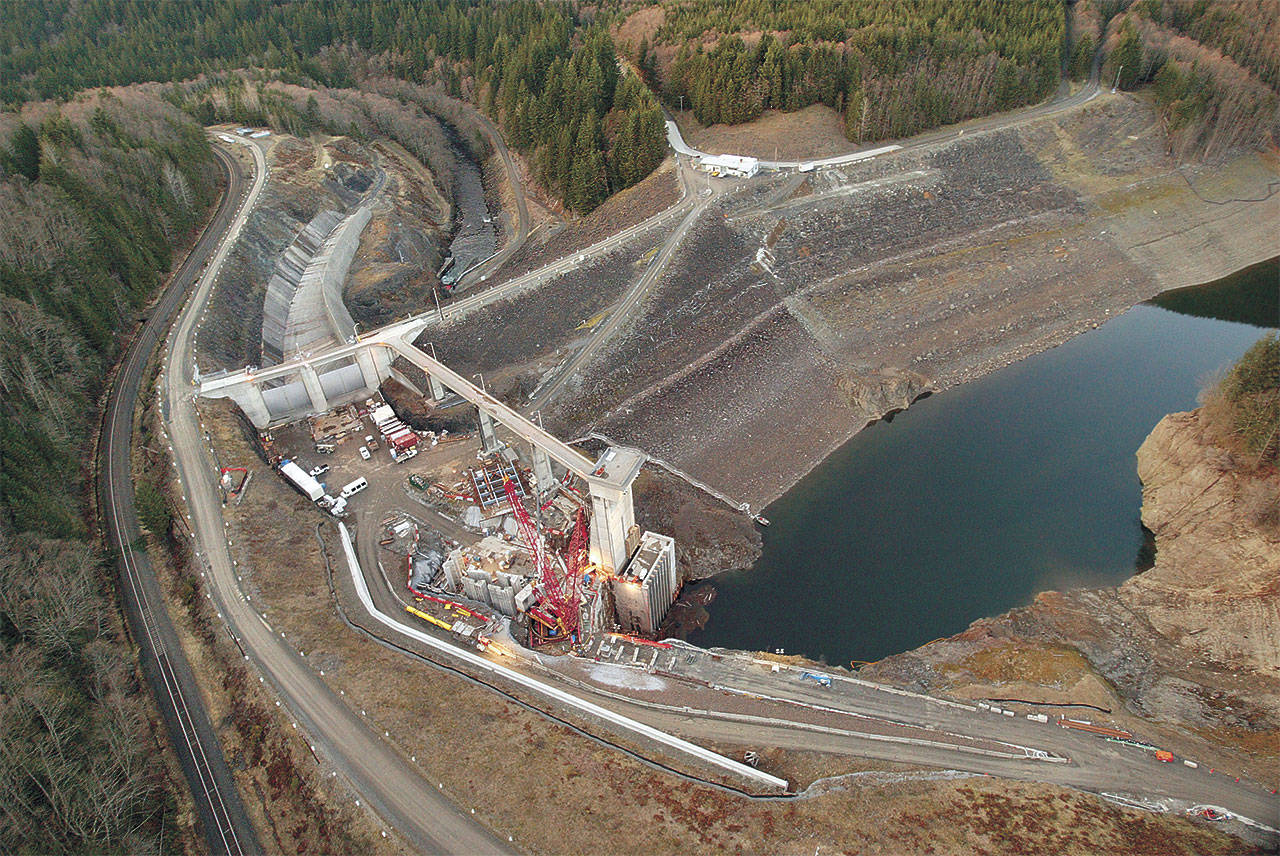By Enrique Pérez de la Rosa/WNPA Olympia News Bureau
After the Oroville Dam crisis last month forced nearly 200,000 people to evacuate their California homes, Washingtonians may wonder if the dams that surround them are in danger of failing.
Dams in all 39 counties are regulated and inspected either by the state Department of Ecology or by federal dam safety engineers.
In January 2009 a leak at the Howard A. Hanson Dam on the Green River threatened the downstream communities of Kent, Auburn, Tukwila and Renton. The U.S. Army Corps of Engineers, which is responsible for the dam’s inspection and maintenance, spent about $40 million to repair the dam.
While the circumstances that led up to California’s Oroville Dam crisis were unique, the likelihood of dam failures in the United States is very high, said Mark Ogden, technical specialist at the Association of State Dam Safety Officials in Lexington, Ky. Dams in the United States fail every year, though not as dramatically as Oroville, he stated.
Heavy rains that followed a long California drought raised the water in the Oroville Dam’s reservoir to dangerous levels, and dam operators were forced to release water into the Feather River through damaged spillways. Repairs on the Oroville Dam have already begun but the crisis prompted officials across the country to review the risks of dam failure and evacuation plans.
“Maybe that’s the type of situation that will be more common with climate change,” Ogden said.
Dam engineers need to know how much water intake to expect every year, Ogden said. Using rainfall data collected over decades, engineers can build a dam to withstand the highest probable flood.
Changes in the climate, such as the amount of water from snowmelt to rainfall, could make designs inadequate in the future, he explained. Snowmelt runoff is slow, steady and predictable while intake from rainfall is sudden and quick, Ogden said.
“You have a much higher peak flow, so you need to be able to design for that, plan for that,” Ogden said.
Guy Hoyle Dodson, a dam safety engineer at the state Department of Ecology (DOE), said proper design is the first line of defense and that protecting the public from disasters is a priority for the state.
“Safety is our major concern,” Hoyle Dodson said. “We’ve been extremely successful in preventing catastrophic dam breaches.”
Of the 1,189 dams in Washington, 1,055 are regulated by the DOE, while another 15 fall under U.S. Army Corps of Engineers jurisdiction. There are 134 dams exempt from DOE control. About 10 to 15 new dams are constructed every year, according to DOE.
Most dams in the state have been built after 1950, but the oldest dam in operation was built in 1888: Chelan County’s Clear Lake Dam on the Chelan River.
All 39 counties in the state have at least one dam: Garfield has one, Asotin and Wahkiakum two and Jefferson six; all others have 10 or more; King has 126, the most.
Dams in the state receive a downstream hazard classification, a rating used to describe the potential loss of human life or property damage if the dam were to fail. About 37 percent of the dams under DOE jurisdiction are located above populated areas, and are therefore classified as having high or significant downstream hazards.
Inspections are vital because repairing a dam is not a simple operation, Tacoma Power generation manager Pat McCarty stated.
“It’s not like fixing potholes in the road,” McCarty said. “When you overtop dams, good things do not happen.”
Tacoma Power has proposed recently to draw down the level of Riffe Lake at the Mossyrock Dam on the Cowlitz River in Lewis County by 30 feet each summer. The proposal came in response to updated seismic data that indicated the dam’s spillway piers might be at risk of failure in a large earthquake.
In a public meeting March 3 at Mossyrock regarding the proposal, McCarty noted that a highly unlikely “intraslab” earthquake of magnitude 7.5 or greater in the vicinity of the Mossyrock Dam would create serious issues.
“But it’s all in the name of public safety,” McCarty added, referring to the information at hand being available to the public.
DOE engineers perform inspections on each high-hazard dam every five years.
This includes a detailed inspection of critical features like spillways as well as an engineering analysis of the dam under extreme flood and earthquake load, Hoyle Dodson said.
During inspections, engineers look for deficiencies such as cracking in the concrete, sloping and even animal burrows.
Low hazard dams are inspected every 10 years by DOE engineers. Eighty inspections are planned this year as well as some minor maintenance work, Hoyle Dodson said.
Ecology also requires the owners of high hazard dams, like Tacoma Power and Seattle City Light, to perform their own inspections annually and to file an inspection form with the Department of Ecology’s Dam Safety Office.
Residents who live downstream from a dam should be aware of emergency evacuation plans and emergency alert systems in their counties, Hoyle Dodson said.
“Be aware if you live below a dam,” Hoyle Dodson said. “Be prepared to leave if there is a problem.”
(This story is part of a series of news reports from the Washington State Legislature provided through a reporting internship sponsored by the Washington Newspaper Publishers Association Foundation. Reach reporter Enrique Pérez de la Rosa at perezenrique17@gmail.com.)


